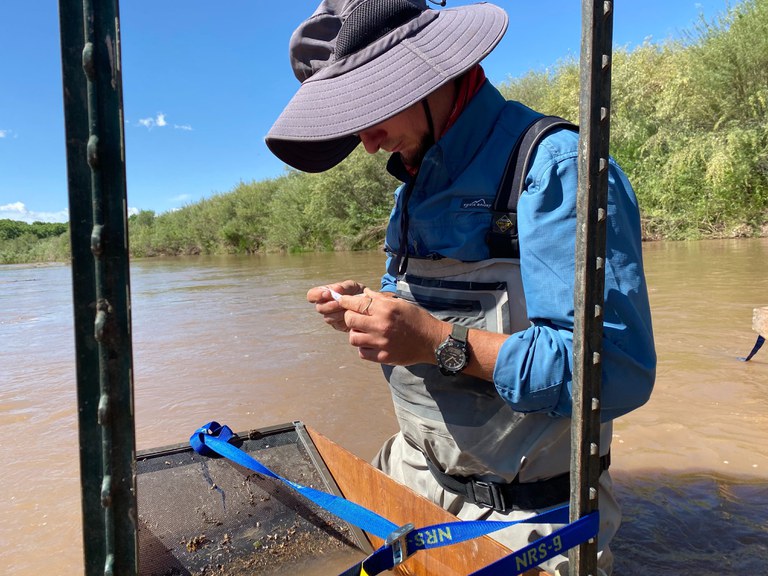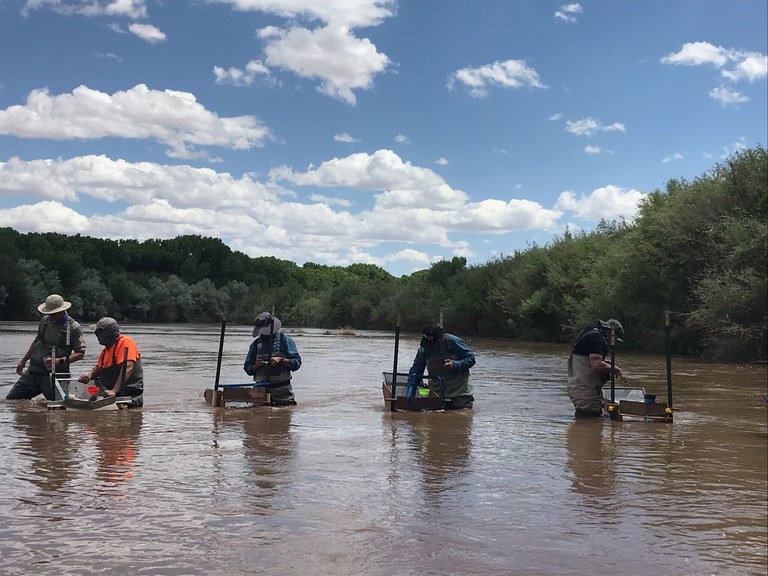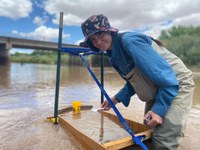ABQ BioPark Aquatic Conservation Facility Collects more than 100,000 Silvery Minnow Eggs this Spring
July 1, 2020 - This May, the ABQ BioPark Aquatic Conservation Facility (ACF) led the collection of more than 100,000 Rio Grande silvery minnow eggs from the river to contribute to the continued conservation of this endangered species, which is native to New Mexico.
The resulting fish are raised to become broodstock (breeders) and help bring about the next generation of minnows. The ACF leads collection efforts of silvery minnow eggs each spring; the eggs are transported to the Southwestern Native Aquatic Resources and Recovery Center in Dexter, NM, and the ABQ BioPark.
The Rio Grande silvery minnow, a 2- to 4-inch long fish, was once one of the most common species in the Rio Grande, but by 1994 its population had declined so greatly that it was added to the federal Endangered Species List.
The BioPark has been part of the recovery program for the Rio Grande silvery minnow since 2000. Each spring, eggs are collected from the Rio Grande. Young fish are then released in the fall and sometimes in the spring. Last fall, the BioPark released 15,000 tagged fish, which brought the tally up to more than 800,000 fish released by the BioPark since 2000. “Egg collection is an important component of the program, as keeping captive populations stocked is critical to the protection of this endangered species,” said Kathy Lang, ABQ BioPark curator for the Aquatic Conservation Facility.

In silvery minnows, spawning is the process of females releasing their eggs and males releasing their sperm at the same time, resulting in fertilization of the eggs. The fish typically spawns in the spring when snow melt around the headwaters of the Rio Grande leads to increased flows downstream, creating ideal breeding conditions.
Because the Middle Rio Grande experienced low flow this year, even drying out in some areas, conditions were unlikely to trigger a significant spawning event for the silvery minnow. To help create better spawning conditions, several of the agencies in the Middle Rio Grande Endangered Species Collaborative Program developed a plan to produce an artificial pulse of water in the river in hopes of encouraging a large scale spawn so that a lot of eggs could be collected.

The pulse of water was initiated at the Isleta Dam on May 24, and it was allowed to flow for more than 48 hours, resulting in increased spawning of the fish. This enabled staff from the ACF to collect more than 100,000 silvery minnow eggs this spring, with the help of staff and other volunteers through the collaborative program. All these eggs were enough to replenish the broodstock at the ACF and the other breeding facilities, ensuring all of the facilities have enough breeders to keep their conservation programs strong.
With low flows in the Rio Grande remaining a constant problem for silvery minnows, conservation for the species is more important than ever. Human alterations to the river have eliminated naturally occurring areas where fish like the silvery minnow could survive during dry periods, making droughts all the more difficult for the species.
“With the current conditions, all of the plants and animals that depend on the river are at risk,” said Lang. “Our goal is to ensure that the Rio Grande silvery minnow survives until conditions are somehow improved and it can be part of a healthy ecosystem again.”

